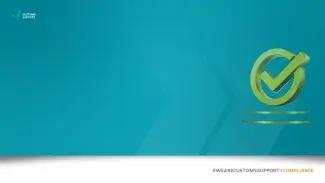Why is there a need for quality assurance in customs?
Customs is an important aspect of a supply chain, despite it being treated as a small detail by many traders and forwarders alike. If your customs processes are not compliant, then it can cause a huge problem for your business. Not only in retrospective duties and penalties, but also in delays and stoppages of current trade.
Therefore, it’s important for us to ensure that everything is being declared as it should be and give you that peace of mind. And the best way to do this is to look after the supply chain, before, during, and after the goods have been delivered.
This is why we use the 2-4-6 eye principle – three sets of eyes looking at your compliance.
The first pair of eyes
What you may not know is that customs really starts before the goods are even ordered. At least, it should begin before the goods are even ordered.
Often, we see with new customers that their goods classification has been done on arrival to the border. This is too late. Classification should be done whilst the business is being evaluated as a viable option. Those import duty costs should be taken into account when purchasing, because they can vary significantly from one country of origin to the next.
Before we can look at variables, however we need to know what the goods are. This is where the first pair of eyes comes in. One of our classification experts will work to find the correct commodity code for your goods, along with all of the duty rates, restrictions, and other considerations for your origin.
Once your classification is done, one of our senior customs consultants works with your purchasing or product managers to review the costs and see where we can improve on this.
For example, can we get the same goods in a country where we can use a Free Trade Agreement or GSP? Is the small increase in duty for this closer country offset by the lower freight? These are the questions we work through to ensure that our customers look at their pricing holistically.
The second pair of eyes
Of course, once the goods are purchased and shipped, our customs declarant will do the entry based on the information provided by the shipper and the customer.
This second pair of eyes ensures that we are compliant at the time of clearance, as things can and do change between pre-classification and declaration.
The third pair of eyes
After the declaration is complete, this is where our third pair of eyes comes in. Note that the declarant will be another pair of eyes, but they are not part of the quality assurance process.
Our third pair of eyes comes from one of our compliance team, who spot-check declarations after the clearance has been completed. As well as checking the HS code is correct, they’ll check the supplier paperwork, datasets, and correspondence to ensure that everything has been entered correctly.
This acts as a final round of feedback so that we can work to fix any errors between the shipper, importer, ourselves, and any other party that’s involved.
Need another pair of eyes on your customs processes?
Customs Support is here for you. Working out of 14 countries across the EU and UK, our consultants and declarants are experienced in most commodities and trade lanes. If you could use some additional peace of mind when it comes to your compliance, contact us for more information.














